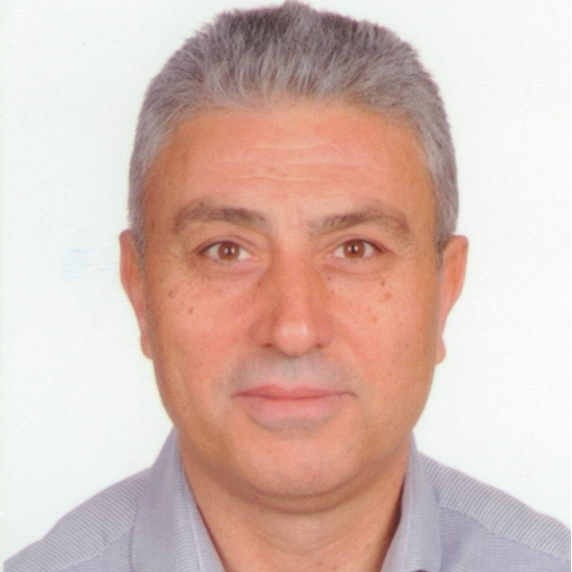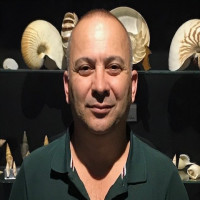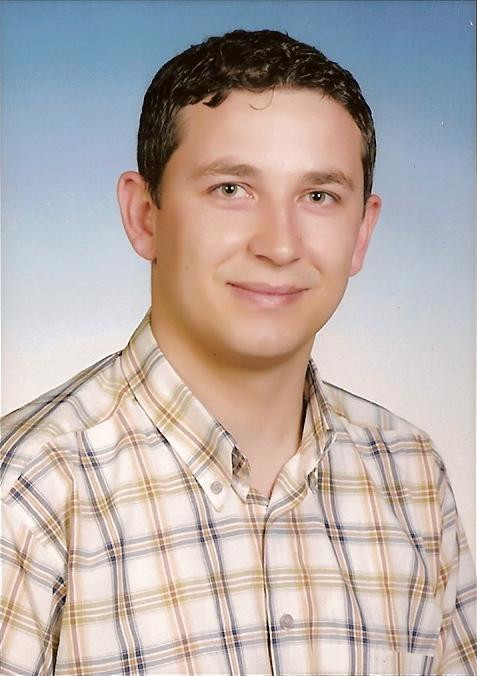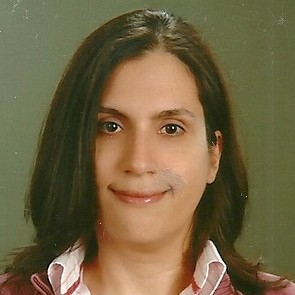Research Article
Review
Short Communication
Aim & Scope
COMU Journal of Marine Sciences and Fisheries (COMU-JMSF) is an Open Access journal, and operates double-blind peer-review process. The journal is the official publication of Çanakkale Onsekiz Mart University Faculty of Marine Sciences and Technology and it is published biannualy on July, and December. The publication language of the journal is English/Turkish and continues publication since 2018.
COMU Journal of Marine Sciences and Fisheries (COMU-JMSF) aims to contribute to the literature by publishing manuscripts at the highest scientific level on all fields of marine sciences and fisheries. The journal publishes original research articles, short communications, technical notes, reports and review articles.The journal does not charge article submission or processing fees.
COMU Journal of Marine Sciences and Fisheries (COMU-JMSF) publishes peer/reviewed (double blind) covering all aspects of marine sciences and fisheries including “biology/taxonomy, ecology, aquaculture/feeds/diseases, fisheries biology, fisheries management, fisheries economy, fishing technology, seafood processing, chemistry, microbiology, algal biotechnology, freshwater, brackish and marine environment, inland waters protection and management, pollution and conservation/sustainability” in the form of original articles, review articles, short communications and technical notes.
Author Guidelines
COMU Journal of Marine Science and Fisheries (COMU J Mar Sci Fish) covers the research on all aspects of Marine Science and Fisheries presented as original articles, reviews, short communications, case study, reports and letters to Editor. COMU Journal of Marine Science and Fisheries is published two times (July and December) (e-ISSN: 2651-5326) in a year, operates double-blind peer-review process, and therefore the authors should remove their name and any acknowledgment from the manuscript before submission. The author names, corresponding author's name, affiliations, address, phone number, e-mail address and ORCID numbers should be given on the title page only.
COMU Journal of Marine Science and Fisheries is an Open Access journal, which means that all content is freely available without charge to the user or his/her institution. Users are allowed to read, download, copy, distribute, print, search, or link to the full texts of the articles, or use them for any other lawful purpose, without asking prior permission from the publisher or the author. This is in accordance with the Budapest Open Access Initiative (BOAI) definition of Open Access.
Original articles and reviews are limited to 25 pages, including tables, figures, and references.
Short communications, technic note, reports and case studies are are limited to 10 pages including tables, figures and references.
Letters to Editor are limited to 3 pages. Letters to the Editor are limited to 3 pages, including tables and explanations.
Article Submission
1) Articles should be written in Turkish or English. Turkish translation of the title, keywords and abstract of the manuscript for foreign authors will be provided by our journal office.
2) All manuscript for COMU Journal of Marine Science and Fisheries should be submitted electronically through the website of the journal which can be accessed at https://dergipark.org.tr/tr/pub/jmsf
3) The manuscripts should not be previously published or accepted for publication and should not be submitted or under simultaneous consideration for publication elsewhere.
4) The editorial board has the right to perform necessary modifications and a reduction in the manuscript submitted for publication and to express recommendations to the authors. The manuscripts sent to authors for correction should be returned to the editorial office within a month. After pre-evaluation and agreement of the submitted manuscripts by the editorial board, the article can only be published after the approval of the field editor and referees specialized in the particular field.
5) All responsibilities from published articles merely belong to the authors. According to the ethical policy of our journal, plagiarism/self-plagiarism will not be tolerated. All papers are detected for their originality using plagiarism check software (iThenticate software http://www.ithenticate.com). Manuscripts with a similarity index of 30% or less will be accepted for further reviewing. Manuscripts with higher similarity than 30% are examined in detail and, if necessariy, sent back to authors for review and correction. Manuscripts are rejected when plagiarism is detected.
6) Authors must indicate the name of institute approves the necessary ethical commission report and the serial number of the approval in the material and methods section. If necessary, the editorial board may also request the official document of the ethical commission report. If an ethical problem is detected (not reporting project information, lack of ethical committee information, conflict of interest, etc.), the editorial board may reject the manuscript at any stage of the evaluation process.
7) Authors should take into account the issues listed in the “Ethical Principles and Publication Policy” section regarding scientific research and authors.
8) The journal does not charge any article submission, article-editorial processing or publication charges (page or color charges). There is no copyright fee for the authors.
PREPARATION OF THE MANUSCRIPT
The manuscript should be prepared in MS Word format (.doc veya .docx) by using Times New Roman font (12 pt) and double-spaced, 2.5 cm margins of all edges. The Latin expression such as species names of bacterium, virus, parasite and fungus and anatomical terms must be written in italic character keeping their original forms. Original drawings, figures, images etc. must be submitted with the original manuscript.
Original manuscript (short communication, technical note) should be arranged as Title page, Abstract, Key words, Introduction, Materials and Methods, Results and Discussion, Acknowledgements, Conflict of Interest, Author Contributions and References.
Reviews should be arranged as Title page, Abstract, Key words, Introduction, Discussion, Acknowledgements, Conflict of Interest, Author Contributions and References.
Line and page numbers should be given from the first page (abstract) of the manuscript.
Abbreviations must follow International rules and defined at their first mention in the text.
The symbols should be selected in accordance with the international usage and defined where it is first used.
The entire article (including text, references, figures and tables) should be given in a single file. Figures and tables should be inside the manuscript placed properly).
Title Page
Title: Must be short and informative and full title should be capitalized for first letter of each word.
Authors: Names and surnames of the authors will be written in capitalized letter for the first letter of each word and the address of the author(s) should be linked by superscript numbers, and listed beneath the title. Corresponding author must be indicated (*) in the author names and must be added address, phone number, and e-mail address. ORCID numbers of all authors should be given on the article.
Subheadings
Level 1: Centered, bold, initials capitalized rest small (Article Title)
Level 2: Left justified, bold, initials capital, rest small (Introduction, Materials and Methods etc.)
Level 3: A tab inside, bold, only the first letter of the title is capitalized, the rest is small, with a dot at the end.
Level 4: A tab inside, bold, italic. only the first letter of the title is capitalized, the rest is small, with a dot at the end.
Abstract
Briefly give the objectives, methods, results and conclusions and it should not exceed 300 words.
Key words
Authors must give up to 6 key words which identify the subject covered by the paper. All keywords should be written using a comma after all.
Introduction
Should indicate the subject of the article which is generally based on a brief interpretation of the related literature. The novelty and the aim of the study should be clearly stated. The introduction should be general enough to attract a reader’s attention from a broad range of scientific disciplines.
Material and Methods
This part contains a brief and clear description of the materials and methods used. Subtitles can be given as appropriate. Detailed descriptions of materials or participants, comparisons, interventions and types of analysis should be mentioned. For experimental studies carried on animals, the authors should mention whether the institutional and national guide for care and use of laboratory animals was respected and also indicate the approval of the local Ethical Committee in this part of the manuscript. Statistical analysis etc should be explained briefly as a sub-title in this section.
Results and Discussion (separate or together)
The data and results of the research (tables and figures) must be clearly and concisely defined and a comparison with related literature citations should be made as appropriate. Significant findings can be briefly summarized as a conclusion in the last paragraph. Detailed interpretation of data should not be included in the results but should be put into the discussion section.
Tables and Figures
Table and Figure titles should be short and informative. Descriptive titles should be given at the top of the tables and at the bottom of the figures. Figures and tables should be inside the manuscript placed properly (not at the end of manuscript).
Legends of illustrations should be listed after the list of references labelled “Figure 1, Figure 2…”unless there is only one figure, in that case the caption should labelled as “Figure”. In addition, figures will be requested from the authors when necessary after the referee reviews are completed. Files should be saved as TIFF or JPEG at least 300 dpi resolution.
Tables should be given at the end of the manuscript with a caption or legend (e.g. Table 1, Table 1..), in case there is only one Table, it should be labelled as “Table”. Tables should be prepared by using Table tool in Word format.
Acknowledgements
Supporting institutions or individuals, project numbers, thesis work etc are briefly acknowledged just before the references. (if any)
Conflict of Interest
The authors should declare whether there is a conflict of interest. For examples;
• The author declares no conflict of interest.
• The authors declare that there are no conflicts of interest.
• The authors have no affiliations with or involvement in any organization or entity with any financial interest, or non-financial interest in the subject matter or materials discussed in this manuscript.
• John Smith declares that he has no conflict of interest. Paula Taylor has received research grants from Drug Company A. Mike Schultz has received a speaker honorarium from Drug Company B and owns stock in Drug Company C.
Author Contributions
Author contributions should be stated in the manuscript. Author contributions should be included in the manuscript by the authors after the referee evaluation process of the article is completed and accepted by the editor.
For examples;
• D. Nak, E. Kuruoglu and Y. Nak, planned and designed the research. Z. M. Ekıcı, D. Koca, T. Avcılar, M. E. Sahın and A. H. Shahzad provided help in the clinic process. M. O. Ozyıgıt and Z. Avcı Kupelı made histopathological examinations. All authors discussed the results and contributed to the final manuscript.
• D. Çayan and E. Unur conceived the ideas of the study and writing manuscript; D. Çayan, M. Nisari, D. Patat and E. Dağlı performed data collection and analysis; H. Akalın performed gene expression stages.
References
All references should be provided in accordance with APA 6 style. The usage of reference managers such as Endnote can be used to organize the references. APA 6th output format should be used in writing the references.
The in-text citation to the references should be formatted as surname(s) of the author(s) and the year of publication: (Bingel, 1981) or (Uysal ve Avşar, 1994).
For citations with more than two authors, only the first author’s name should be given, followed by “et al.” and the date. (Gücü et al., 2016).
If the cited reference is the subject of a sentence, only the date should be given in parentheses, i.e., Erkoyuncu (1983), Pauly et al. (1978).
When its needed to cite two or more references together, in-text citations should be arranged alphabetically in the order in which they appear in the reference list, i.e. (Bingel, 1978; Gulland, 1987; Holden ve Raitt, 1974) or (Kocataş, 1978, 1979, 1981) or (Avşar ve Bingel, 1988a, 1988b).
All citations should be listed in the reference list. References should be listed alphabetically ordered by the author’s surname, or first author’s surname if there is more than one author at the end of the text.
DOI number (if available) should be added at the end of the reference. A dot should not be placed after the DOI information.
In the web references can be reached online only, the web address (full URL) and connection date should be added at the end of the reference information.
References should have the order of surnames and initial letters of the authors, (the year of publication). Title of the article, title of the journal, volume (issue number), page numbers and doi: xxxxxx. The article title should only start with the first letter capital in the first word, lower case if the rest is not a special name. The journal title should be italic and spelled out fully, and each word should start with a capital letter (Fisheries Research, Journal of Fisheries and Aquatic Sciences). Volume should be written in italics e.g. volume (issue number).
The citation of journals, books, book chapters and articles published online should conform to the following examples:
Journal article:
Baran, B. (2010). Scaphopod species (Mollusca) of the Turkish Levantine and Aegean seas. Turkish Journal of Zoology, 38(2), 190-209. doi:10.3906/zoo-0902-12
Ak, İ., & Türker, G. (2018). Antioxidant properties and phytochemicals of three brown macro algae from the Dardanelles (Çanakkale) strait. Agricultural Science and Technology, 10(4), 354- 357. doi: 10.15547/ast.2018.04.065
Jonsdottir, R., Sveinsdottir, K., Magnuisson, H., Arason, S., Lauritzsen, K., & Thorarinsdottir, K. A. (2011). Flavor and quality characteristics of salted and desalted cod (Gadus morhua) produced by different salting methods. Journal of Agricultural and Food Chemistry, 59(8), 3893-3904. doi: 10.1021/Jf104203p
Book:
Meilgaard, M., Civille, G. V., & Carr, B. T. (1999). Sensory evaluation techniques (3rd ed) (387 p. CRC Press, Inc. ed.). Boca Raton, FL: CRC Press.
Parsons, T.R., Matia, Y., & Lalli, C.M. (1984). A manual of chemical and biological methods for seawater analysis. New York: Pergamon Press.
Özdamar, K. (1997). Paket programlar ile istatistiksel veri analizi I. Eskişehir: Kaan Yayın evi.
Book chapter:
Sikorski, Z. E., & Ruiter, A. (1995). Changes in proteins and nonprotein nitrogen compounds in cured, fermented, and dried seafoods. In Z. E. Sikorski, B. S. Pan & F. Shahidi (Eds.), Seafood Proteins (pp. 113-126): Springer.
Proceedings:
Soultos, N., Lossifidou, E., Lazou, T. & Sergedilis, D. (2010). Prevalence and antibiotic susceptibility of Listeria monocytogenes isolated from RTE seafoods in Thessaloniki (Northern Greece). In Ş. Çaklı, U. Çelik, C. Altınelataman (Eds.), West European Fish Technologists Association Annual Meeting 2010 (pp. 94-98). İzmir, Turkey: Bildiriler Kitabı.
Werlinger, C., Mansilla, A., Villarroel, A., & Palacios, M. (2009). Effects of photon flux density and agricultural fertilizers on the development of Sarcothalia crispata tetraspores (Rhodophyta, Gigartinales) from the Strait of Magellan, Chile. In M. A. Borowitzka, A. T. Critchley, S. Kraan, A. Peters, K. Sjøtun & M. Notoya (Eds.), Nineteenth International Seaweed Symposium: Proceedings of the 19th International Seaweed Symposium, held in Kobe, Japan, 26-31 March, 2007. (pp. 307- 315). Dordrecht: Springer Netherlands.
Thesis:
Lauritzsen, K. (2004). Quality of salted cod (Gadus morhua L.) as influenced by raw material and salt composition. (PhD Dissertation), University of Tromsø, Tromsø, Norway.
Electronic (web) resources:
Andrews, T. (2010). What vitamins are found in fish? Access date: 27.11.2012, http://www.livestrong.com/article/292999-what-vitamins-are-found-in-fish
FAO (2018). FAO Yearbook of Fishery Statistics/Global Production Statistics 1950-2015. Access date: 24 January 2018, http://www.fao.org/fishery/statistics/global-production/query/en/
Proofs
One set of proofs will be sent to the corresponding author as given on the title page of the manuscript. Only typesetter's errors may be corrected; no changes in, or additions to, the edited manuscript will be allowed. Subsequent corrections will not be possible, so please ensure your first sending is complete.
Copyright Notice
Upon submission of a manuscript to COMU-JMSF, a copyright release form should be completed as part of the submission process. Copyright release form can be accessed through https://dergipark.org.tr/en/journal/2332/file/ Authors who submit articles should download, sign and scan the form and submit it via the system. Manuscripts of authors who do not submit copyright release form along with the manuscript will not be accepted for further reviewing. By completing copyright release form, all authors affirm that the manuscript has not been submitted for publishing to elsewhere. When the manuscript is accepted COMU-JMSF holds the exclusive right to publish and reproduce the article in any form.
Ethical Principles and Publication Policy
ETHICAL GUIDELINES
Çanakkale Onsekiz Mart University, Journal of Marine Sciences and Fisheries is an international peer-reviewed scientific journal. Ethics issues and policies for authors, referees, editor and the Publisher have been prepared based on open access guides and policies of the Committee on Publication Ethics (COPE; (https://publicationethics.org/).
Manuscripts submitted to JMSF are evaluated by double-blind review process. Accepted papers are published electronically and free of charge. The following summarizes the ethical guidelines and policies for authors, referees and editors.
ETHICAL GUIDELINES FOR AUTHORS
• Manuscripts submitted to ÇOMÜ-JMSF should be original work and authors are expected not to submit their work to other journals. The copy right transfer form should be signed by the corresponding author and submitted along with the manuscript.
• Only authors with significant contribution should be listed as co-authors
• Authors should declare conflict of interest in connection with the manuscript.
• Authors, if required, should provide meta data and other details about their study to the editor
• All Literature used in the main text should be cited in references.
• When the authors detect a major error or inaccuracy, they should communicate with the editor and explain the nature of the error. Depending on the nature of the error, the manuscript can be corrected or retracted.
• For studies that require ethics committee decision, authors should declare that they received approval from ethics committee. The name of the ethics committee along with approval date and number should be indicated on the materials section of the manuscript. A copy of the original approval form must also be submitted online.
• If the manuscript contains previously published contents such as pictures, figures or tables, the author should provide a statement of permission to reproduce the material from the copyright owner. The authors will be held responsible for any legal and financial liabilities.
ETHICAL GUIDELINES FOR REVIEWERS
• Reviewers should ensure that reviewing process is confidential and adhere with the bilateral blind review and should not contact the authors.
• The manuscript should be within reviewer’s area of expertise.
• If reviewers discover a conflict of interest they should recuse themselves from the review process and contact the editor.
• Reviewers should phrase their comments appropriately and with due respect.
• Reviewers should be fair, unbiased in their assessment of the manuscript.
• Reviewers should complete the review process within a reasonable time and should not unnecessarily prolong the review process.
ETHICAL GUIDELINES FOR EDITORS
The editör-in-chief, the associated editor and the field editors of Çanakkale Onsekiz Mart University, Journal of Marine and Fisheries Sciences (COMU-JMSF) follow ethics guidelines by "COPE Code of Conduct and Best Practice Guidelines for Journal Editors" and "COPE Best Practice Guidelines for Journal Editors" as described below.
1. General duties and responsibilities
• The editor is responsible for all the manuscripts published in JMSF. He is responsible for the peer review prceses, originality of manuscrios, ethic committe and experimental permissons, and copy right issues. He is also responsible for improving the journal policy and enable the implementation of journal policy.
• Editor is responsible for improving the quality of the journal.
2. Relation with authors
• Resposible fort he decision making proceses by tking into consideration the originality and impotance of the manıscript, its relevance to the journal’s scope and, the validty and reliability of experimental methods.
• If the submitted manuscript is rejected after preliminary reviewing he should Notify the authors for his decision and provide detailed explanation.
• Provide informstion to the authors about the status of the manuscript without breaching the double sided blind review process.
• Should review and update instructions for authors
3. Relation with reviewers
• Select reviewers based on their expertise in connection with the manuscript.
• Contact reviewers to reveal any conflict of interest for an unbiased review of the submitted manuscript.
• Make sure the reviewing process is confidential and the double-sided blind review process is not breached.
• Encourage reviewers to conduct an unbiased review and to phrase their comments respectfully
• Maintain a data base of reviewers, update this list on the bases of performance and seek to enlarge the reviewer pool.
• Remove from the JMSF list of any reviewers who consistently produce biased reviews and does not follow ethical guidelines and seek to investigate if a reviewer misconduct is suspected.
4. Relations with editorial board
• Maintain regular contact with the members of the editorial board for the best practice of journal management and inform the members about the journal policies.
• Evaluate the members of the editorial board and seek to identify and select members who actively contribute to the development of the journal.
• Assign manuscripts to the members of the editorial board on the bases of their expertise
ETHIC RESPONSIBILITIES OF THE PUBLISHER
• Editors-in-chief should have full authority over the content of the journal. All decisions made by Editors-in-chief should be independent of the Publisher/owner.
• The publisher should provide open access to the journal’s content free of charge.
Animal/Human Rights and Ethics
The authors are responsible for conducting experimental on animal experiments within the framework of existing international legislation on animal rights (Directive 2010/63/EU of the European Parliament and of the Council). Authors must also obtain permission from the Animal Experiment Ethics Committees (HADMEK/HADYEK).
Ethics committee approval is required for all kinds of research that require data collection from participants using questionnaires, interviews, observation, experimentation, and interview techniques. Authors should prove that they have received the approval of the authorized institutional committee (s).
Authors must provide information permissions from the Ethics Committees in the Material and Method section to experiment with animals/humans.
The editor/subject editors can request from the corresponding author, if necessary, to send a copy of the ethics committee approval form to the journal. In cases of violation ethical rules, the article is not taken into consideration or if it is in the evaluation stage, the procedure is terminated and the article is rejected.
ARTICLE EVALUATION AND PUBLICATION PROCESS
Articles submitted to COMU-JMSF are primarily evaluated by the technical editors. Manuscripts are pre-checked by the technical editors for compliance with the submission and writing rules of the Journal. If a deficiency or error is detected, it is sent back to the author.
After this process, the editor-in-chief review the manuscript (initial evaluation process). At this stage, articles not having suitable scope and aims, with low original research value, containing scientific and ethically important errors, having low potential to contribute to science and the journal, and having poor language and narration are rejected by the editor without peer-review process.
Articles that are deemed appropriate for editorial evaluation are sent to the section editor related to the category of articles to be examined in terms of scientific competence. The section editors examine the article in all aspects. Peer-review process is applied to the articles that have completed preliminary evaluation process. At least 2 referees who are experts in their fields are assigned. Each manuscript is reviewed through a double-blind peer-review process (identities of authors and peer reviewers are disclosed). At this stage, referees send their decision (reject, revision or accept) about the article to subject editors. Section editors take the final decision (Accept, Reject) of manuscript in line with the reviewer opinions and report their decisions to Editor-in-Chief.
The articles that have completed the peer-review evaluation stages and accepted by the Editor-in-Chief are sent to the corresponding author for final checks and necessary final additions. After the acceptance, the article designed in the publication format of the journal is given an DOI number and published immediately in COMU-JMSF page.
All responsibility for the scientific content and expressions in the published article belongs to the authors.
Editors and journal staff as authors
Editors and editorial team members are excluded from publication decisions when they are authors or have contributed to a manuscript.
Editors/editorial board members do not make decisions about works written by them or co-author(s). The usual procedure applies for this type of manuscript. The process continues without the relevant author being included in the evaluation process (preliminary evaluation and peer-review process) in the journal.
PLAGIARISM AND ETHICAL ISSUES
Manuscripts that are submitted to our journal are meticoulsly examined for plagiarism and ethical issues. The following are taken into consideration during this process.
Plagiarism
Plagiarism is the unattributed use of another author’s work. Plagiarism may take different forms; for example, while literal copying or substantial copying is considered plagiarism, paraphrasing the work of another author is also considered as plagiarism. In order to prevent potential plagiarism problems, manuscripts submitted to Çanakkale Onsekiz Mart University, Journal of Marine and Fisheries Sciences (COMU-JMSF) are screened for similarity using IThenticate (http://www.ithenticate.com/) software. Manuscripts with a similarity index of 30% or less will be accepted for further reviewing. Manuscripts with higher similarity than 30% are examined in detail and, if necessariy, sent back to authors for review and correction. Manuscripts are rejected when plagiarism is detected.
Non original work
Non original work arises when non-existent or manipulated data are used in scientific studies. When necessary, the editor may require further information with regard to when, where and how the study was carried out. This information is important for originality of the work.
Authorship of contribution
Our journal requires that, although the concept of authorship is defined vaguely, contributions by all authors should clearly be defined and non-contributors or those with trivial contributions should not be conferred the status of author. In addition, all contributors should approve the final draft of the manuscript. In essence, an author should also be able to defend the paper. When necessary, the editör, may ask all authors
Redundant Publication
Redundant publication or double publication refers to publishing the same manuscript more than once. It is very important that manuscripts submitted to our journal should be original work and should not have been submitted to other journals. In addition, data slicing that involves segmentation of a single study into multiple publications should be avoided.
The following summarizes other important unethical issues in submitting manuscripts to our journal:
• Not indicating whether the manuscript is produced from the author’s Masters/PhD thesis or a project.
• Using someone’s unpublished material without permission of the author.
• Breaching ethical rules in experiments involving humans or animals.
• Not considering animal welfare, biological diversity and habitat conservation
• Conducting experiments involving animals without appropriate authorization or permission.
In addition to above mentioned issues, authors are expected to declare conflict of interest in connection with the manuscript, for unbiased reviewing.
Price Policy
Makaleler açık erişimlidir ve kullanımı ücretsizdir. Yayınlanan makaleler kalıcı olarak arşivlenir. Dergide yayınlanan bir makalenin kullanılmasında uygun atıf yapılması gereklidir.
Indexes
Citation Indexes
Other Indexes
Journal Boards
Director

Editor in Chief

Associate Editor

Section Editors




After completing my Master’s degree in 2003 at Çanakkale Onsekiz Mart University, Institute of Science, in the field of Environmental Sciences, I obtained my Ph.D. in the Department of Fishing and Processing Technology at the same university, specializing in "Bioecological characteristics of Chondrichthyan fishes in the Northern Aegean Sea, Saros Bay." Following my doctoral studies, my academic research has focused on fish biology, chondrichthyan fishes, and population dynamics. I have participated as both a principal investigator and a researcher in significant projects on the biological characteristics, growth, and reproductive dynamics of sharks and rays distributed along the coasts of the Northern Aegean Sea—Saros Bay, Gökçeada—and the Sea of Marmara. I have authored several national and international publications and have participated in scientific conferences related to this field.
Technical Editor


Layout Editor


Copyeditor
İhtiyoplankton, balıkların erken yaşam evreleri, balık biyolojisi ve populasyon dinamikleri konularında araştırmalara yapmaktayım.
Foregin Language Editor

Statistics Editor

 Web
Web
Editorial Board

 Web
Web





 Web
Web
1998 yılında ODTÜ Deniz Bilimleri Enstitüsü'nden doktora derecesini aldım. Master ve doktora süresince midye balık ve suda organik kirleticilerin miktarı ve etkileri konularında çalışmalar yaptım. Organik kirliliğin deniz canlıları üzerindeki fizyolojik etkilerini enzim ve DNA-adduct indikatörleri kullanılarak belirleme çalışmaları yaptım. Bu süre içerisinde Ingiltere, Hırvatistan'daki laboratuvarlarda kısa süreli çalışmalar yaptım. Aromatik DNA-adduct, alkalen elution tekniklerini öğrenerek çalışmalarımda kullandım. Bu dönemde Çukurova Üniversitesi Sağlık Bilimleri Enstitüsü'nde yaptığım çalışmalarla deniz canlılarının kirliliğin etkisiyle meydana gelen enzim aktivite değikliğinin tespiti ve etkileri konuları da yaptığım çalışmalar arasındadır. 1998-2013 yılları arasında TÜBİTAK MAM'da başuzman araştırmacı olarak çalıştım. Bu dönemde onlarca ulusal/uluslararası projenin yürütücüsü/araştırmacısı olarak çalıştırm. Çalışma konuları arasında deniz kirliliği, petrol kirliliği, petrol kirliliğine hazırlıklı olma aşamasında acil müdahale merkezleri ve acil müdahale planları çalışmalarını yürüttüm. Bu dönemde kirliliğin etkilerinin ölçülebilmesi için enzim çalışmaları ve NRR deneyleri ile çalışmalarımı derinleştirdim. Bu dönemde post-doc sırasında Ingilterede iki laboraturda çalışmalar yaptım. 2004 yılında YÖK doçenti 2014 yılında Karadeniz Teknik Üniversitesi Deniz Bilimleri Fakültesi'nde Profesör'lük ünvanını aldım. Karadeniz Teknik Üniversitesi'ndeki akademisyenlik dönemi boyunca birçok ulusal ve uluslararası proje yazdım yürüttüm. 2 master tezine danışmanlık yapıyorum.


 Web
Web



 Web
Web



 Web
Web






